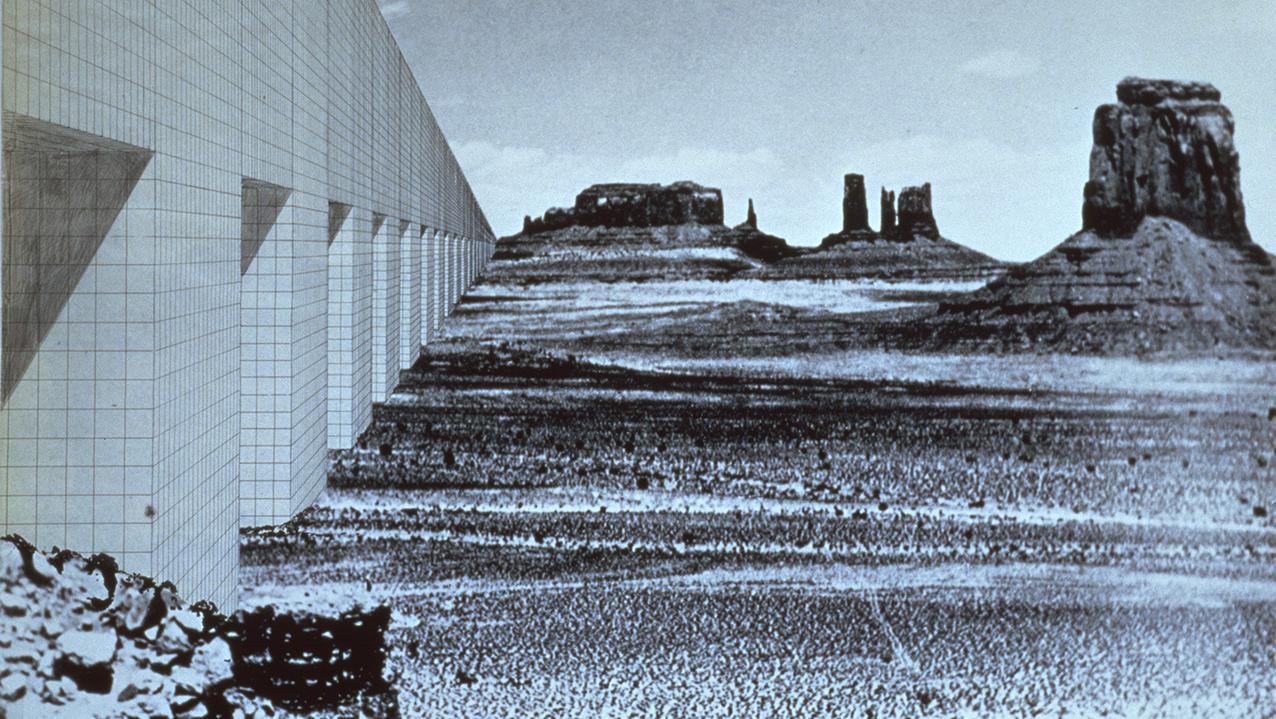Their sublime, dystopian visions of the future were extreme and unbuildable, but they influenced a whole generation of architects. Fifty-five years after the founding of the radical Italian architecture collective Superstudio, a new Brussels exhibition pays homage to the power of their provocative images.
It seems like something from a dream, buried deep in your subconscious, this infinite, immaculate structure stretching to the horizon, a white line plowing across the desert, engulfing Manhattan in its gridded grasp, slicing through the Austrian city of Graz, marching imperturbably over hill and dale, encircling the globe in its technofuturist embrace. What it is made of, or what happens in it, nobody can say. All we know is its scale is terrifying and its relentlessness sublime. Il Monumento Continuo — The Continuous Monument in English—was a series of photomontages produced half a century ago, in 1969–70, by the Italian architecture collective Superstudio, whose arresting images of a radical future marked a whole generation of architects—Zaha Hadid, Rem Koolhaas and Bernard Tschumi among them. Fifty years later, the Continuous Monument is one of the highlights in a comprehensive retrospective of the group’s work, “Superstudio Migrazioni”, curated by Emmanuelle Chiappone-Piriou at CIVA, the center for architecture and urbanism in Brussels.
Superstudio, Un catalogo di ville , 1968–1970, Villa suburbana A6, Villa Cubica, 1969. Photography Cristiano Toraldo di Francia. Archivio Toraldo di Francia, Filottrano (AN) Italy
In the Beginning Superstudio was founded in 1966 by Adolfo Natalini and Cristiano Toraldo di Francia, who met at the architecture faculty in Florence. In 1967 they were joined by the industrial designer Roberto Magris, in 1968 by the architect Gian Piero Frassinelli, and in 1970 by Magris’s brother Alessandro…
com.dsi.gazette.Article : 21454
This content is for subscribers only
You still have 85% left to read.
